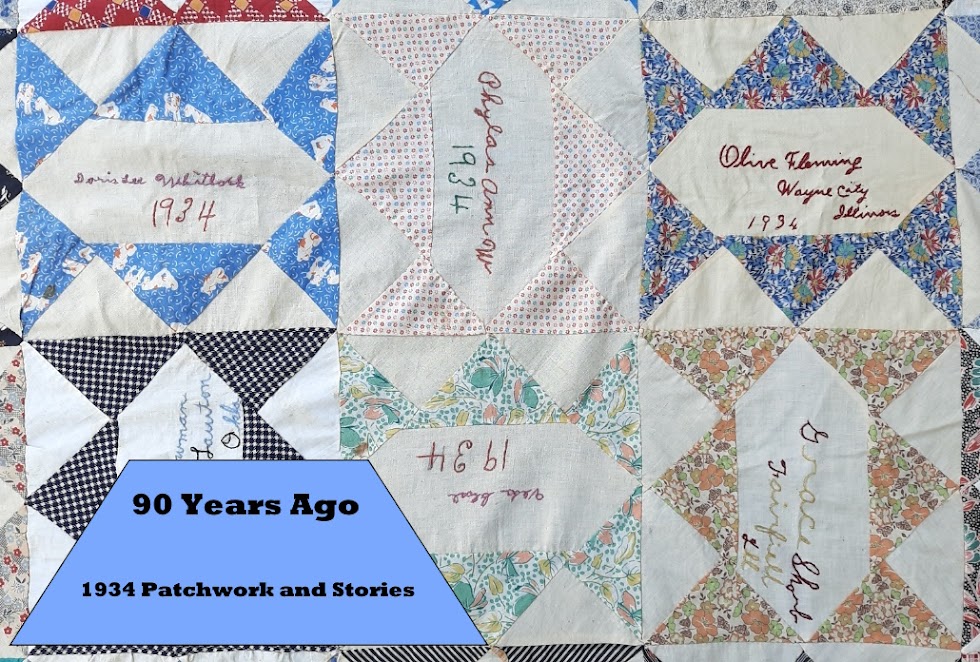Gussie Herr worked as a seasonal worker in the fruit packing shed when it was harvest time. Her husband Clemens was a farmer and cabinet maker, and their three children still lived at home; George was a timber worker, Elizabeth a stenographer and Marie was still at school.
 |
| Gussie and Clemens |
Gussie was an active member of her church, the First Christian Church in Camas, Washington. She had a long association with her church - Gussie lived to 103! Her obituary reads, "She was very active in her church and was loved by all until the day the Lord took her home." I found Gussie's obituary at one of the genealogists' favourite websites: www.findagrave.com. Usually a hit brings up photos of tombstones, but this time there were photos of Gussie Herr herself.
 |
| Christian Church, Camus, Washington 1911 |
Quilting was often a group activity in the first decades of the 20th century. In remote communities the church and the quilting bee were the only opportunities for women to meet and socialize. In the 1930s signature quilts were till popular as fundraisers for church building programs, or as a presentation to a retiring minister or Sunday school teacher.
 | ||||
Church fundraising quilt made by members of the
Grace Evangelical Lutheran Church,
Allentown, Pennsylvania. Dated between 1934 and 1937
Detail of the Grace Evangelical quilt. Individuals paid a small amount to have their name embroidered, and further funds were made when the quilt was raffled.
Some church associated groups earned funds by hand quilting tops made by others, the cost being calculated by the size of the quilt, the complexity of the pattern or the number of spools of thread used in the quilting.
Was the Malaga quilt a church project? It doesn't appear to be. The quilt owner Lena Wallace was a member of the Malaga Christian Church, and the Malaga Homemakers were a church ladies group known for their quiltmaking activities. But the women in the Malaga quilt come from a number of different churches; one was married by a Catholic priest and yet another was Jewish. Belonging to a church was important to many of the women, but they didn't all attend the same congregation.



Wow Sharon, so much info you have found and shared. I find it all to be fascinating so many thanks, Jan
ReplyDelete